Crested Geckos
Our Team
Team Name: The Crested Crew
School Name: Pershing School
Team Members Names: Carlos (6th) and Ethan (7th)
Type of animal: The habitat is designed for a Crested Gecko
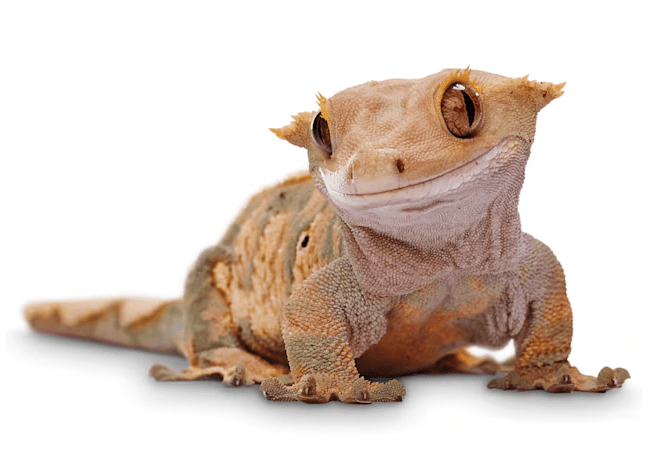
All About Crested Geckos
- A fully-grown crested gecko can be 8 inches to 10 inches.
- Crested geckos have sticky pads on their toes which allows them to climb smooth surfaces, including glass.
- Crested geckos are nocturnal.
- Crested gecko’s life span is 15 to 20 years.
- Crested geckos typically like temperatures ranging from 72 to 75 degrees Fahrenheit.
- They like to eat crickets, mealworms, and mashed fruits.
- They are omnivores.
Cheeto-our class crested gecko
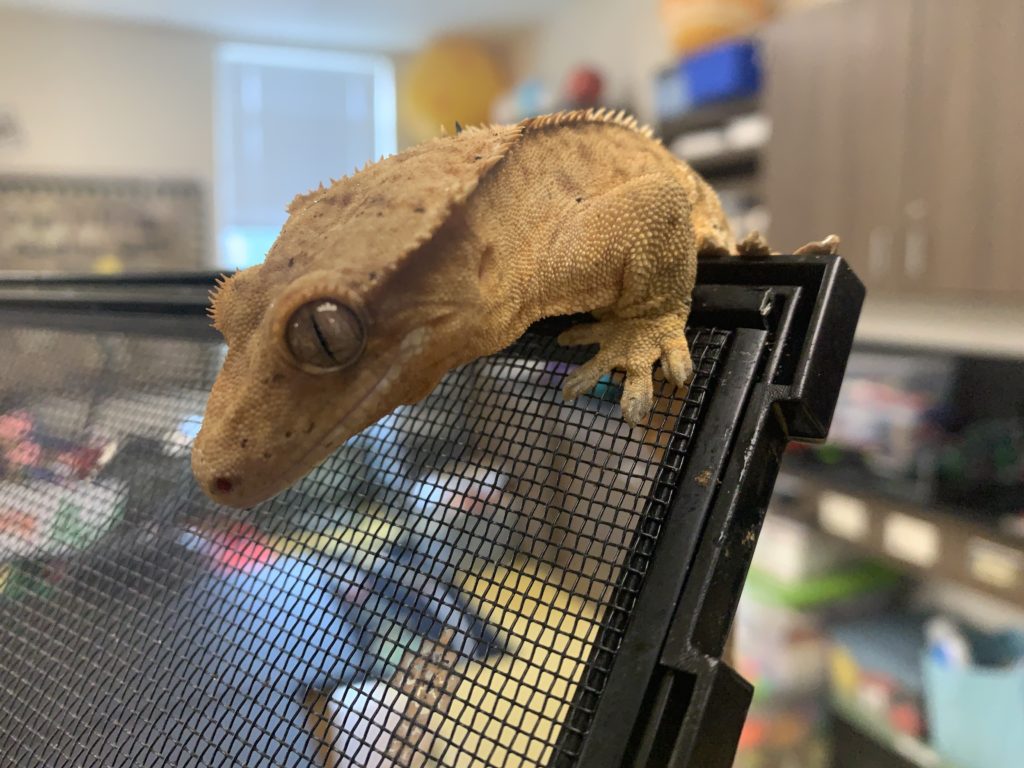
Habitat Needs for Crested Geckos
- They need plants in the habitat for shade
- They also, need vines and sticks to climb and jump around
- The Crested Geckos need a steady temperature of 72 to 75 degrees so that the Gecko stay Healthy and safe
- The Geckos need Food to have a stable diet and lifestyle
- The gecko needs a humid tank with you misting at least 5 times a day
Critter Cottage Design
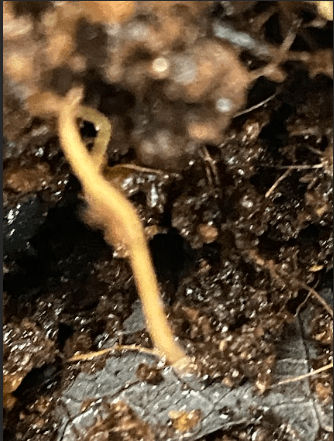
This habitat is good for the crested gecko because it is humid, shady, and the perfect temperature for the reptile. It is spacious and gives it room to crawl freely. Geckos enjoy climbing so the cage is tall, and we used non-toxic (safe for animals) pond and stone foam covered with sphagnum moss to create a rock wall. There are logs in the habitat for the gecko to crawl in and out of, and there are also leaves to add more detail in the habitat. There is a long stick that stretches out from one side of the habitat to the other side which is how the gecko would get to his food. We have a DIY humidifier connected to the habitat to keep the cage humid as the crested gecko needs especially at night when we are not at school. We can mist the cage during the daytime to save energy. We are using passive solar energy as the cage will be placed near our classroom window. Crested geckos are nocturnal, but they do need a 12 hour day/12 hour night cycle to keep their behavioral cycle in check.
Most of the materials we used were repurposed and reused from old cages our teacher had. The cage was a donated cage. The sticks and leaves were collected from outside. They were baked in the oven to kill any bacteria. We can replace it by collecting more as needed. We also added springtails to the soil. The springtails will help break down our gecko’s waste into nutrients. They also disperse those nutrients throughout the substrate as they dig and move about which will be good for our plant.
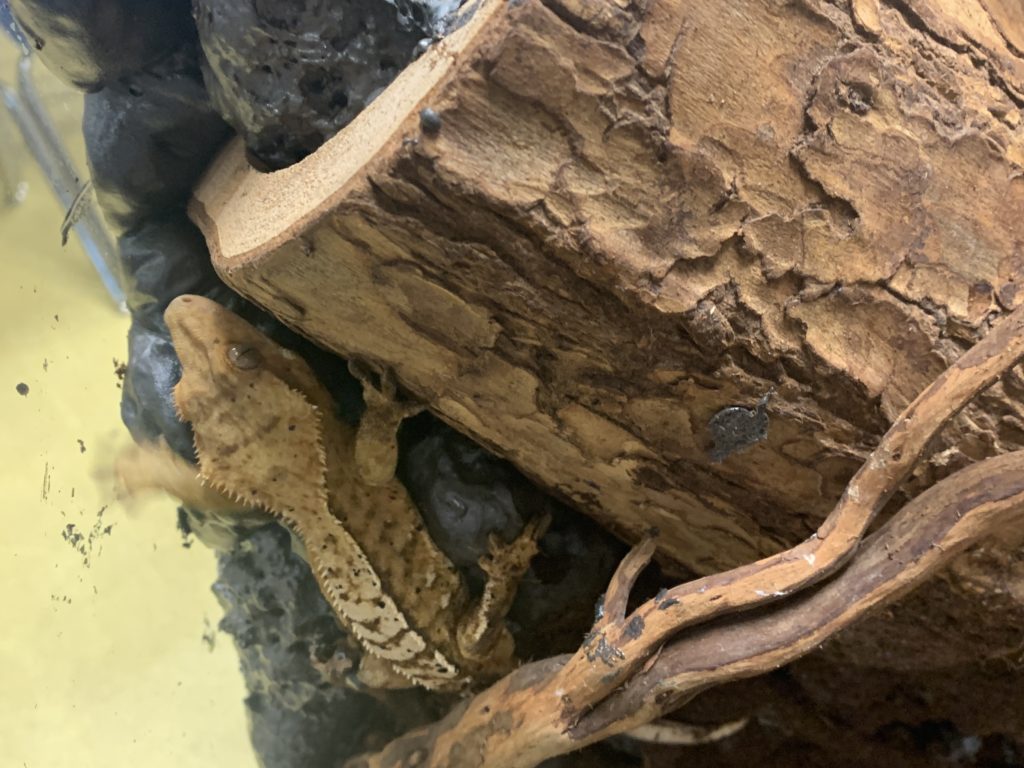
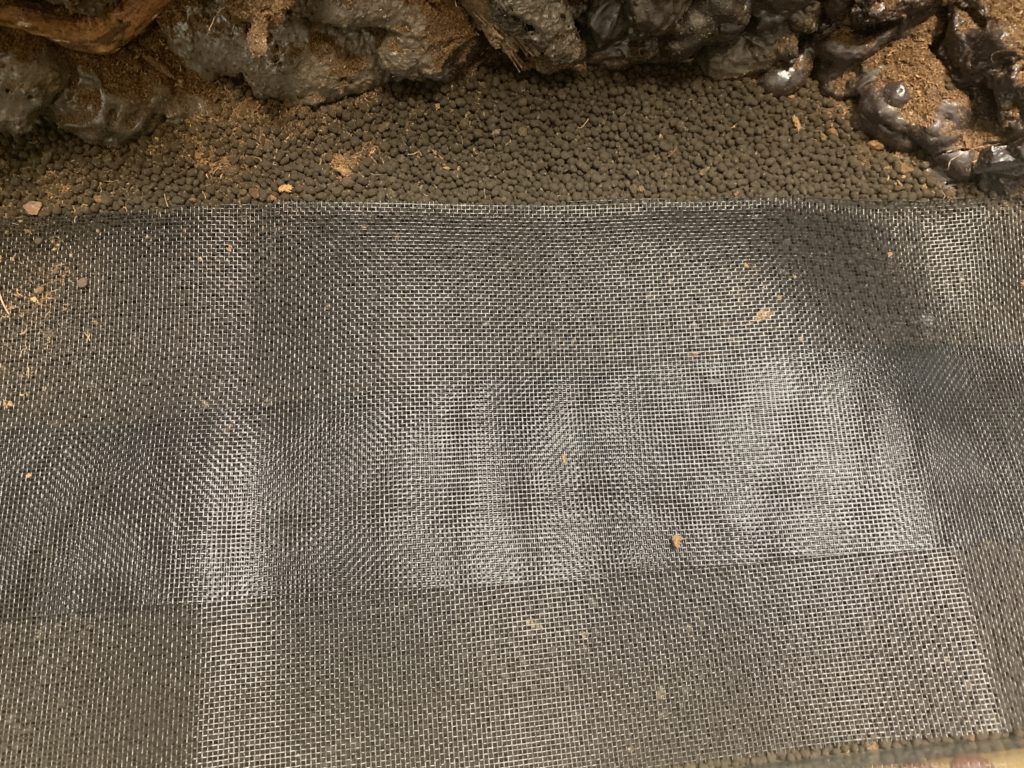
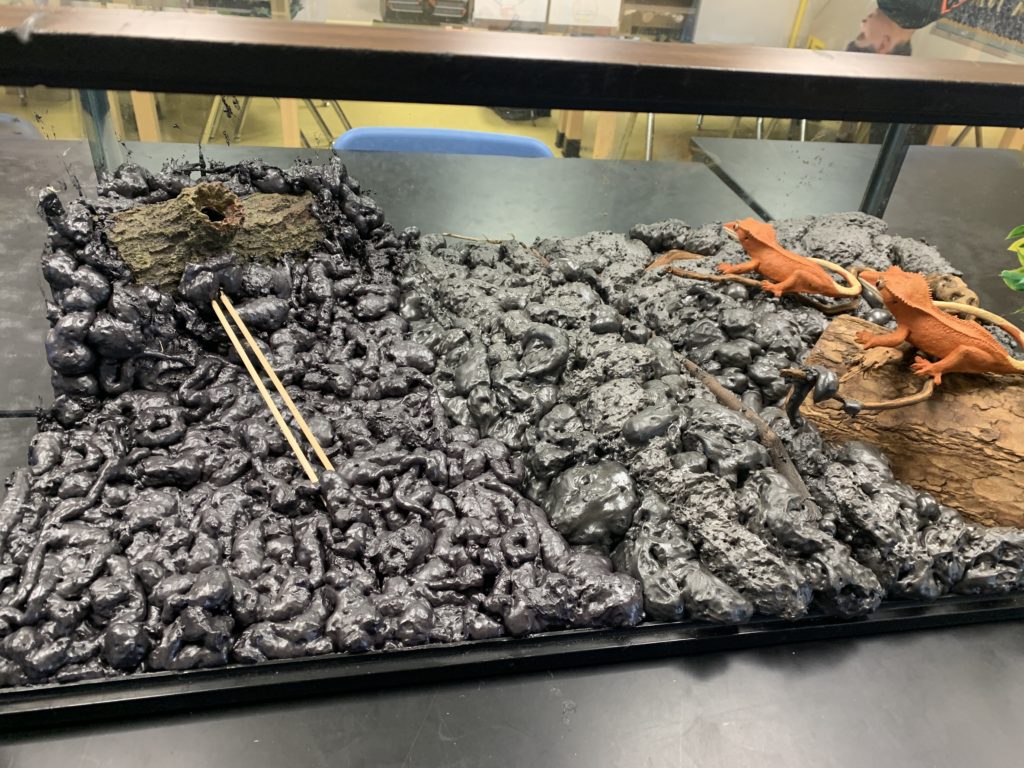
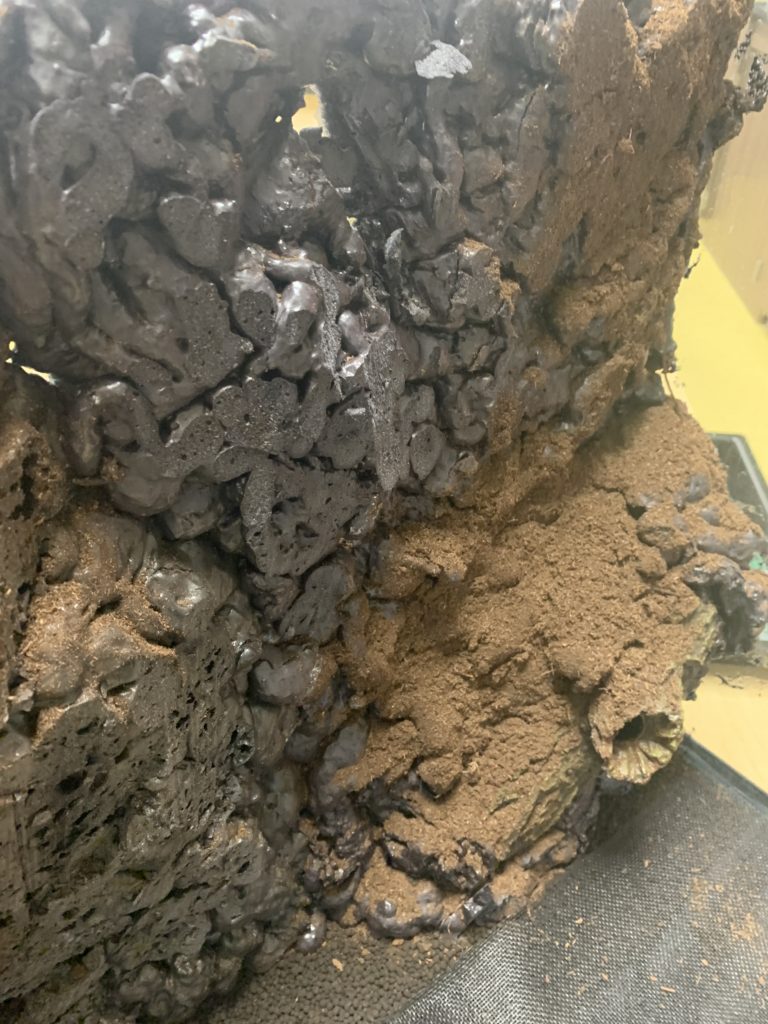
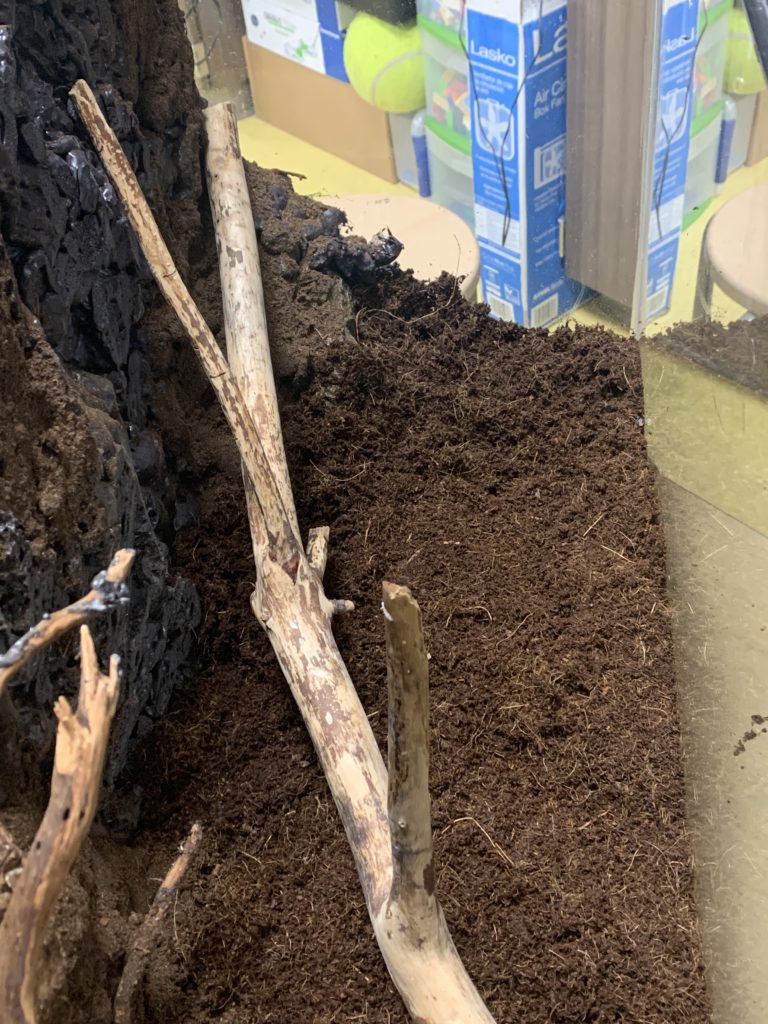
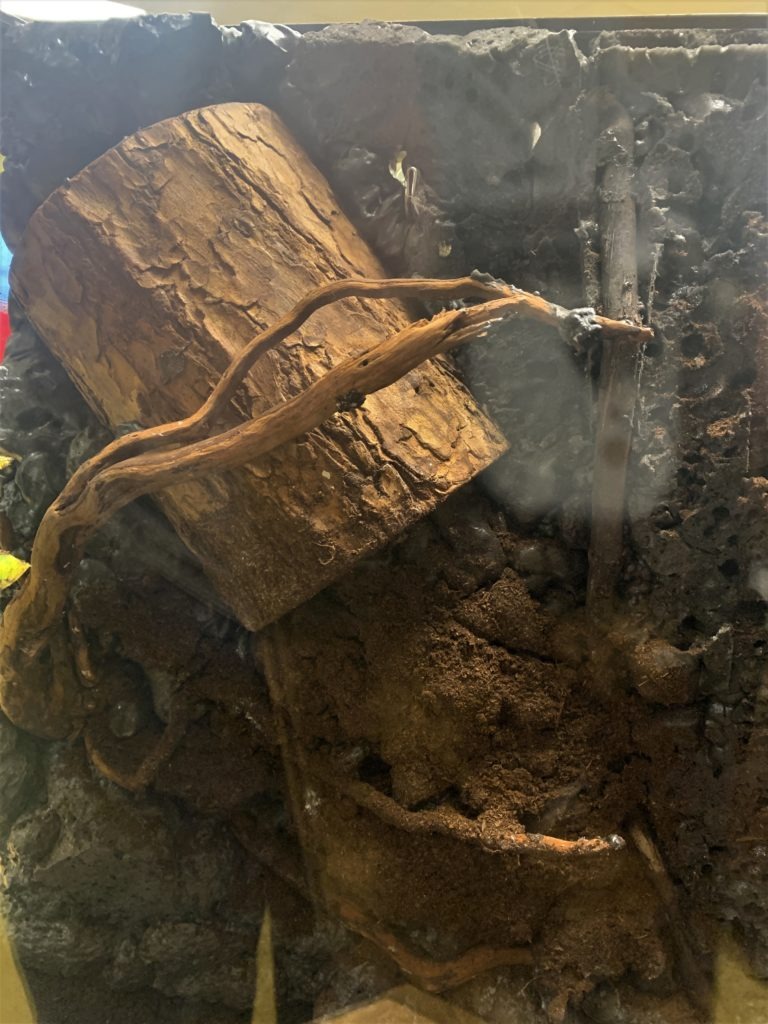
Materials Used. Website Resources. Help Received
Materials
- Aquarium with Lid (Reused)
- Pond and Stone Spray Foam
- Silicone
- Hide Logs (Reused)
- Food Shelf (Resused)
- Water Dish (Resused)
- Exoterra Bioactive Volcanic Substrate
- Window Screen Mesh (recycled)
- Sticks, Branches, Leaf Litter (collected from outside)
- Sphagnum Moss
- Plastic Hanging Plants (resued)
- Springtails
- Live plant
- DIY Humidifier (see directions below on how it was built)
Help
Mrs. Febres, our teacher, supervised our building of our vivarium. She helped us look for supplies in her classroom to reuse.
Our wonderful parents supported us by bringing us to Energy Whiz and picking us up when we stayed after-school to work on it.
Here are some of the sites we visited to get ideas and/or information about crested geckos.
Vivarium Build by Genna’s Plants
How to Build a Paludarium (Vivarium) by Dr. Plants
Crested Gecko: Species Profile
Bioactive Vivarium Build for My Crazy Crested Gecko
Our DIY Humidifier
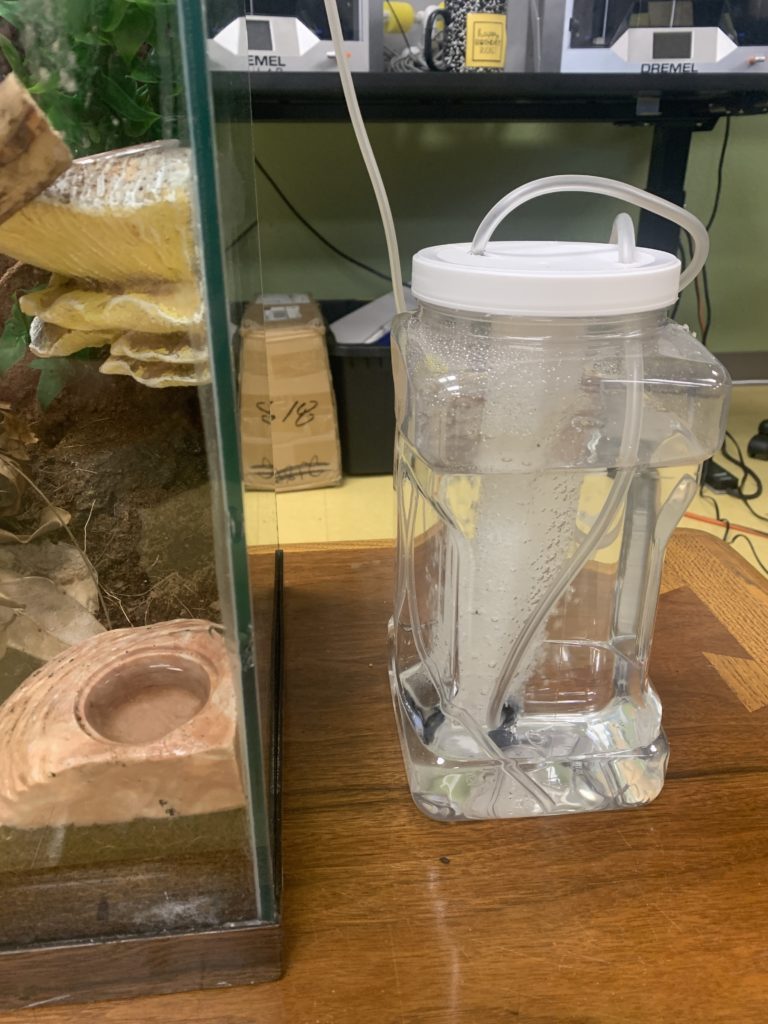
We created this DIY Humidifier to use when we can’t mist Cheeto. Hand misting is better since it uses less energy, but this will work at night or over the weekends.
Critter Test
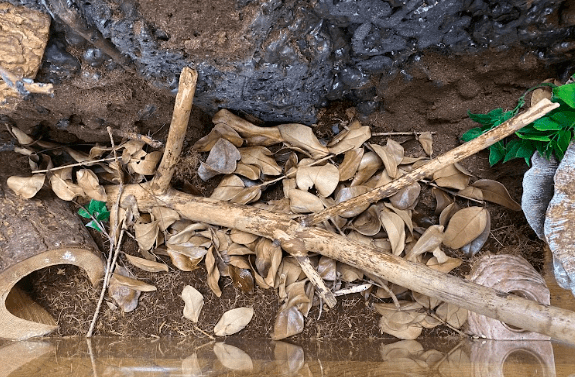

Cheeto loves his new habitat! When he was first introduced to his new vivarium, he was all over the place. We tested the vivarium in the late afternoon knowing he is nocturnal. He was much more active than he had been in his other cage. He was climbing the rock wall and the sticks. He really seems to enjoy his new hide box. In fact, Cheeto stayed in the habitat during the school day, and we saw him go in and out of the hide box several times. He also seems to enjoy the plants-both plastic and live. He likes to hide among the plants. We put the cage near the window and recorded the temperature. It remained between 71 and 74 degrees Fahrenheit, so the sunlight gives the sense of a day/night cycle, but it doesn’t raise the temperature too much.
We can’t really see him at night, so we did some research on how to tell if your gecko is happy and healthy. Some signs are that you can handle them easily and they like to climb your arms as if you are a human branch. That is definitely Cheeto! Happy geckos will also be active and alert. They climb and spend more time in in branches than on the ground. They do spend a lot of time in their favorite spot. Cheeto’s old favorite spot was his food shelf, but we know think he really likes his hide! Healthy geckos will have regular stools. We found some of Cheeto’s every morning when we come in to check on him.
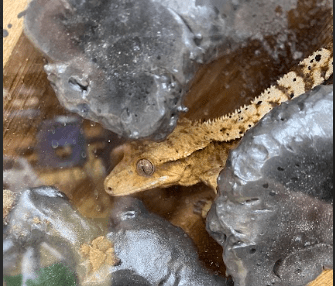
Cheeto really likes his hide box on the side of the aquarium. We made it so that students can view him in the hide from the opposite side of the cage. (See picture.)
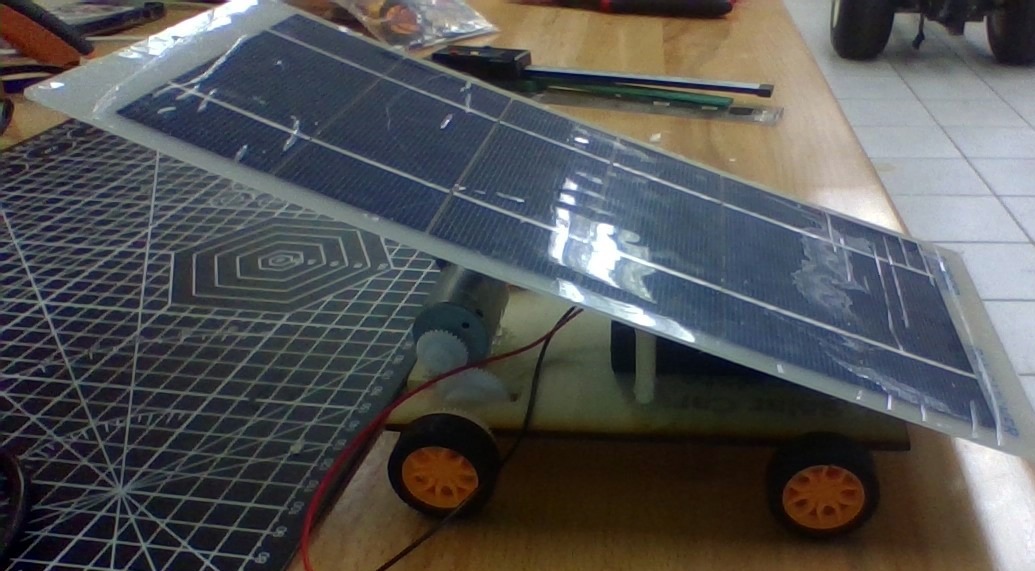
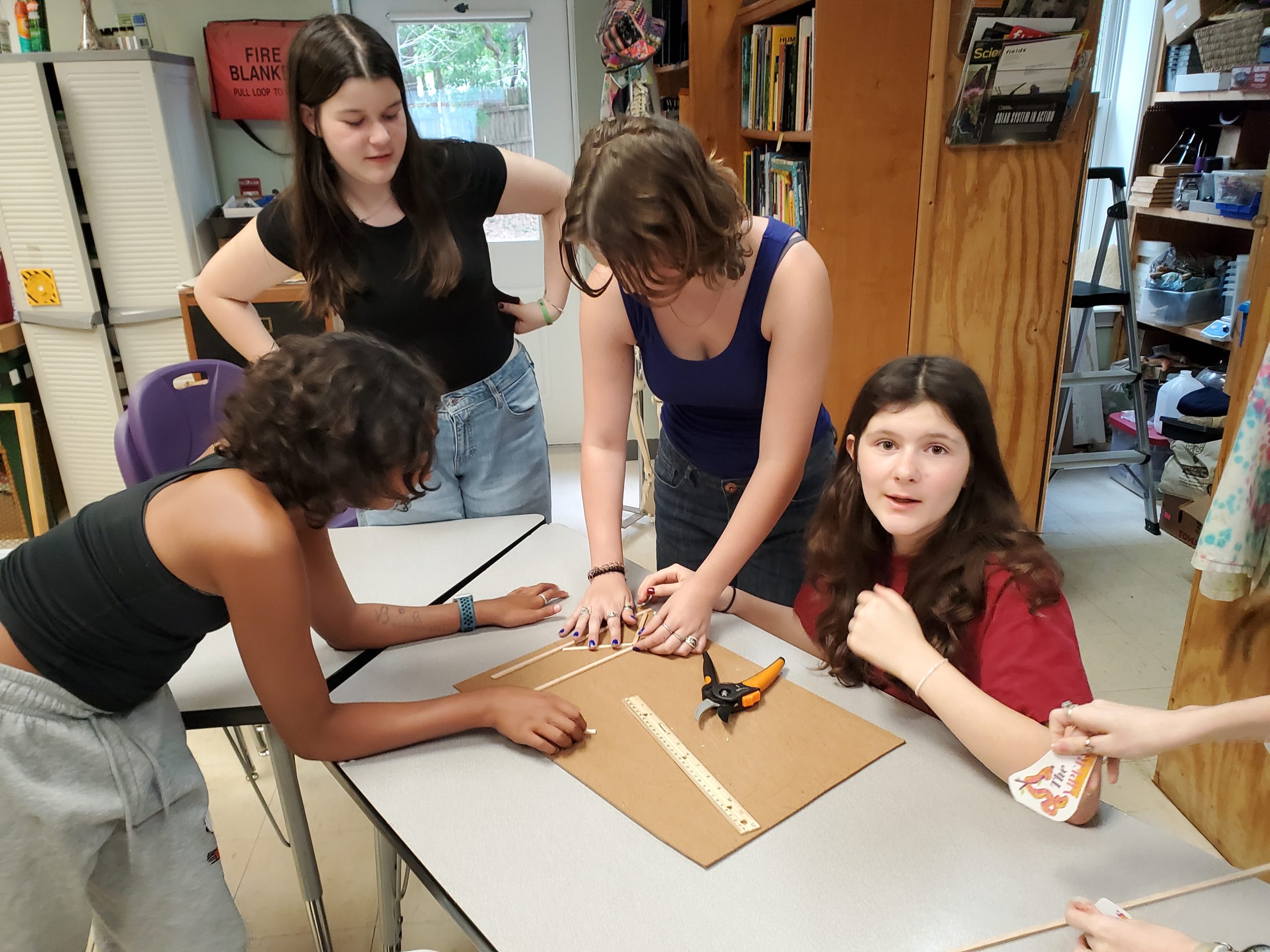
You guys did a really nice job!
Congratulations!!!
Hi Carlos and Ethan. I want to congratulate you for such an excellent project, the information of the Crested Geckos is super interesting …God bless you ❤️
Congratulations! Wonderful job and very well explained. Love it 👍👍❤